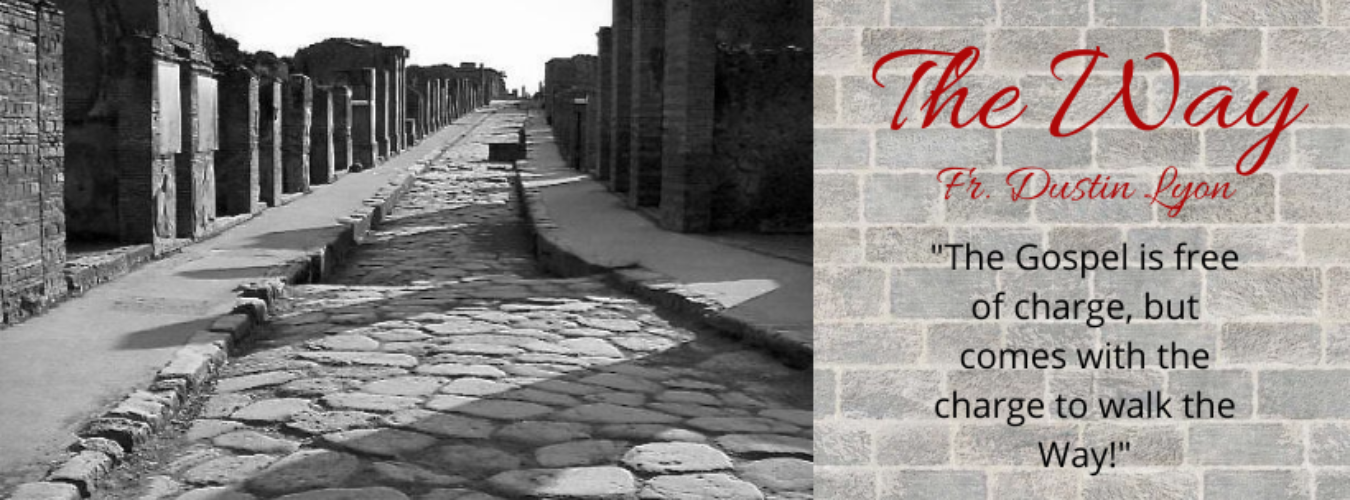10th Sunday of Luke
A lot of people come to church to grow closer to God. But, some people find out that that religion actually pushes them away from God.

It’s like medicine that makes you sick, or a law that purposely makes you break the law.
The woman in today’s reading has been coming to synagogue for 18 years hoping that God will make her whole.
But, all she has to show for it is her crippled body.
As she discovers, the Law, or Torah, has prevented her from being healed.
It’s too restrictive. But shouldn’t God’s Law bring us into his healing presence?
Scripture: Luke 13:10-17 (click here to read)
Bottom Line: To do what the law requires, Jesus breaks it.
Discussion Questions
- The Law appears to be the villain. Are there regulations or rules in Orthodoxy that you think keep you away from experiencing God’s grace? How so?
- As we see, it’s the interpretation of the Law, not its intent that prevents the woman’s healing. What’s the intent of the rules you think are too restrictive? How were they meant to bring you closer to God? Does seeing them with a new perspective reorient how you understand them? Why or why not?
- How does understanding the intent of the Law free you to experience God’s grace in a new way? Now, with new eyes, how does the Law actually provide a bridge to God rather than barrier?
Moving Forward
The problem with the Law really isn’t the Law, but its interpretation.
The intent is to show that God desires mercy, not sacrifice. Jesus fulfills that intent by healing the woman.
Jesus shows that the Law is meant to be a bridge to God, not a barrier.
This frees us to think about how we live our own faith. It allows us to be active participants (co-workers) in our own salvation.
If we are served a steak at as a guest at a friend’s house on a Friday, we see that mercy and hospitality allows us to eat it.
Seeing the true intent of the Law opens our eyes to see that we are always unworthy of communion, but that God’s mercy covers all our sins.
We’re invited to embrace God through a change of heart and be transformed.
We’re redeemed from our crippled body to approach Christ, commune, and be made whole.
Changing Your Mind
“‘And this woman, who is a daughter of Abraham whom the Accuser has bound for—look!—eighteen years, should she not be released from bondage on this, the day of the Sabbath?’” (Luke 13:16)


Thank you for your prayers. God bless.
What is the significance of the number 18?
Here’s what I was able to find online:
“The first is another fascinating example of numerology. The number 18 occurs only in this chapter in the whole New Testament, and Luke emphasises it not only by mentioning it twice here (in verses 11 and 16; it also occurs in the previous episode in Luke 13.4) but by using two different phrase on the two occasions, δεκαοκτὼ and δέκα καὶ ὀκτὼ (ten-eight and ‘ten and eight’). Why might this be significant? Because, as Mikeal Parsons shows in a fascinating study in numerology, 18 is the value of the first two letters of Jesus’ name, iota and eta, and in one manuscript tradition, the number eighteen is actually written iota-eta, with a line over it, which corresponds to a nomen sacrum, an abbreviation commonly used in manuscripts for the holy name of Jesus and of God. In emphasising this number, Luke is claiming that Jesus is the appointed cure of her ailment.
“‘This interpretation is reinforced by one of the earliest papyrus witnesses to Luke, Chester Beatty Papyrus I, better known as P45…At both 13:11 and 13:16, the number “eighteen” is written as ιη, with an over stroke to indicate the letters are serving as a number. Likewise, in 13:14, the name of “Jesus” is written in the same way, ιη, also with an over stroke, here though to indicate the nominum [sic] sacrum. The result is a purely visual phenomenon in which the reader of P45 would encounter the same abbreviation, ιη, for both “eighteen” and “Jesus,” reinforcing our Christological interpretation of the number eighteen in Jesus’ response in 13:16…
“‘Given the presumed propensity to equate the number eighteen (or better “ten and eight”) with Jesus, at least in some circles, this form drew attention to the number and was the aural equivalent to the visual phenomenon. Thus, an audience hearing Luke 13 could have the experience in identifying the eighteen years of Luke 13:16 with Jesus, an experience not altogether unlike the one enjoyed by the actual reader of the symbols on the page. In this reading, not only is the woman’s true character made manifest in the healing, so is the identity of Jesus revealed in the very number associated with the length of her illness.'”
https://www.psephizo.com/biblical-studies/the-many-layers-of-the-story-of-the-women-bent-double-in-luke-13/
Fascinating! thanks so much for this Fr. Dustin and for your blog and pod casts, your teaching is very helpful